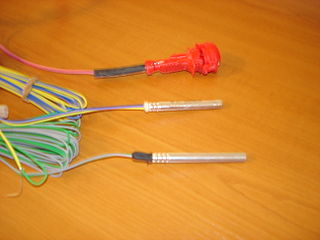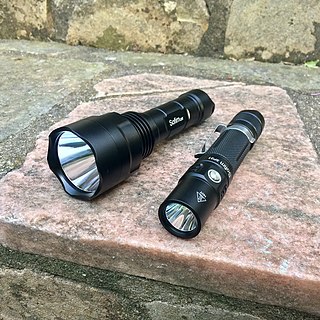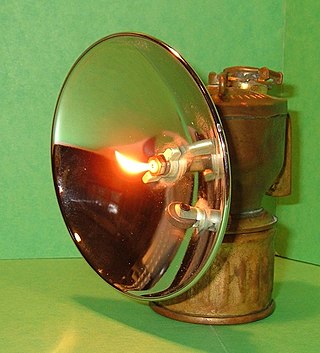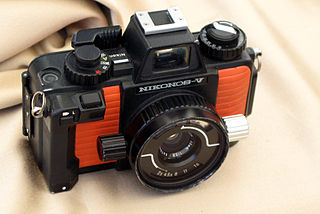
A detonator, sometimes called a blasting cap in the US, is a small sensitive device used to provoke a larger, more powerful but relatively insensitive secondary explosive of an explosive device used in commercial mining, excavation, demolition, etc.

The percussion cap, percussion primer, or caplock, introduced in the early 1820s, is a type of single-use percussion ignition device for muzzle loader firearm locks enabling them to fire reliably in any weather condition. Its invention gave rise to the caplock mechanism or percussion lock system which used percussion caps struck by the hammer to set off the gunpowder charge in rifles and cap and ball firearms. Any firearm using a caplock mechanism is a percussion gun. Any long gun with a cap-lock mechanism and rifled barrel is a percussion rifle. Cap and ball describes cap-lock firearms discharging a single bore-diameter spherical bullet with each shot.

Pyrotechnics is the science and craft of creating such things as fireworks, safety matches, oxygen candles, explosive bolts and other fasteners, parts of automotive airbags, as well as gas-pressure blasting in mining, quarrying, and demolition. This trade relies upon self-contained and self-sustained exothermic chemical reactions to make heat, light, gas, smoke and/or sound. The name comes from the Greek words pyr ("fire") and tekhnikos.

A flash is a device used in photography that produces a brief burst of light at a color temperature of about 5,500 K to help illuminate a scene. A major purpose of a flash is to illuminate a dark scene. Other uses are capturing quickly moving objects or changing the quality of light. Flash refers either to the flash of light itself or to the electronic flash unit discharging the light. Most current flash units are electronic, having evolved from single-use flashbulbs and flammable powders. Modern cameras often activate flash units automatically.

A flashlight (US) or electric torch (CE), usually shortened to torch, is a portable hand-held electric lamp. Formerly, the light source typically was a miniature incandescent light bulb, but these have been displaced by light-emitting diodes (LEDs) since the early 2000s. A typical flashlight consists of the light source mounted in a reflector, a transparent cover to protect the light source and reflector, a battery, and a switch, all enclosed in a case.

A shell, in a military context, is a projectile whose payload contains an explosive, incendiary, or other chemical filling. Originally it was called a bombshell, but "shell" has come to be unambiguous in a military context. A shell can hold a tracer.
The year 1899 in science involved some significant events, listed below.

Joshua Lionel Cowen, born Joshua Lionel Cohen, was an American inventor and cofounder of Lionel Corporation, a manufacturer of model railroads and toy trains that gained prominence in the market before and after World War II.

In an explosive, pyrotechnic device, or military munition, a fuse is the part of the device that initiates function. In common usage, the word fuse is used indiscriminately. However, when being specific, the term fuse describes a simple pyrotechnic initiating device, like the cord on a firecracker whereas the term fuze is used when referring to a more sophisticated ignition device incorporating mechanical and/or electronic components, such as a proximity fuze for an M107 artillery shell, magnetic or acoustic fuze on a sea mine, spring-loaded grenade fuze, pencil detonator, or anti-handling device.

A Carbide lamp or acetylene gas lamp is a simple lamp that produces and burns acetylene (C2H2), which is created by the reaction of calcium carbide (CaC2) with water (H2O).

A mechanically powered flashlight is a flashlight that is powered by electricity generated by the muscle power of the user, so it does not need replacement of batteries, or recharging from an electrical source. There are several types which use different operating mechanisms. They use different motions to generate the required power; such as squeezing a handle, winding a crank, or shaking the flashlight itself. These flashlights can also be distinguished by the technique used to store the energy: a spring, a flywheel, a battery or a capacitor.

A zinc–carbon battery (or carbon zinc battery in U.S. English) is a dry cell primary battery that provides direct electric current from the electrochemical reaction between zinc (Zn) and manganese dioxide (MnO2) in the presence of an ammonium chloride (NH4Cl) electrolyte. It produces a voltage of about 1.5 volts between the zinc anode, which is typically constructed as a cylindrical container for the battery cell, and a carbon rod surrounded by a compound with a higher Standard electrode potential (positive polarity), known as the cathode, that collects the current from the manganese dioxide electrode. The name "zinc-carbon" is slightly misleading as it implies that carbon is acting as the oxidizing agent rather than the manganese dioxide.

The Minolta XG-M was a 35mm single-lens reflex camera introduced in 1981 by Minolta of Japan. It was also known as the X-70 on the Japanese market, in which it was not available until 1982. When released, it was the top model in Minolta's XG series of consumer-grade manual focus SLRs, replacing the XG-9. Changes from that model included a metered manual mode, and a revised body style with rearranged controls. This was also the first camera to use Minolta's new logo, which was used until the 2003 merger into Konica Minolta.

Nikonos is the brand name of a series of 35mm format cameras specifically designed for underwater photography launched by Nikon in 1963. The early Nikonos cameras were improvements of the Calypso camera, which was an original design by Jacques-Yves Cousteau and Belgian engineer Jean de Wouters. It was produced in France by La Spirotechnique until the design was acquired by Nikon to become the Nikonos. The Nikonos system was immensely popular with both amateur and professional underwater photographers. Its compact design, ease of use, and excellent optical quality set the standard for several decades of underwater imaging. Nikon ceased development and manufacture of new Nikonos cameras in 2001, but the camera remains popular, and there is a large and active secondary market.

In photography and cinematography, available light refers to any available source of light that is not explicitly supplied by the photographer for the purpose of taking pictures. The term usually refers to light sources in the surrounding environment that are present naturally or artificial lighting that are already pre-existing. It generally excludes flashes, although arguably flash lighting provided by other photographers shooting simultaneously in the same space could be considered available light. Light sources that affect the scene and are included in the actual frame are called practical light sources, or simply practicals.

Banquet photography is the photography of large groups of people, typically in a banquet setting such as a hotel or club banquet room, with the objective of commemorating an event. Clubs, associations, unions, circuses and debutante balls have all been captured by banquet photographers.

A headlamp, headlight, or head torch (UK) is a light source affixed to the head typically for outdoor activities at night or in dark conditions such as caving, orienteering, hiking, skiing, backpacking, camping, mountaineering or mountain biking. Headlamps may also be used in adventure races. Headlamps are often used by workers in underground mining, search and rescue, surgeons, and by other workers who need hands-free directed lighting.

A grenade is an explosive weapon typically thrown by hand, but can also refer to a shell shot from the muzzle of a rifle or a grenade launcher. A modern hand grenade generally consists of an explosive charge ("filler"), a detonator mechanism, an internal striker to trigger the detonator, an arming safety secured by a transport safety. The user removes the transport safety before throwing, and once the grenade leaves the hand the arming safety gets released, allowing the striker to trigger a primer that ignites a fuze, which burns down to the detonator and explodes the main charge.
The safety fuse is a type of fuse invented and patented by English inventor William Bickford in 1831. Originally it consisted of a "tube" of gunpowder surrounded by a waterproofed varnished jute "rope." It replaced earlier and less reliable methods of igniting gunpowder blasting charges which had caused many injuries and deaths in the mining industry. The safety fuse burns at a rate of typically about 30 seconds per foot.

An artillery fuze or fuse is the type of munition fuze used with artillery munitions, typically projectiles fired by guns, howitzers and mortars. A fuze is a device that initiates an explosive function in a munition, most commonly causing it to detonate or release its contents, when its activation conditions are met. This action typically occurs a preset time after firing, or on physical contact with or detected proximity to the ground, a structure or other target. Fuze, a variant of fuse, is the official NATO spelling.




















